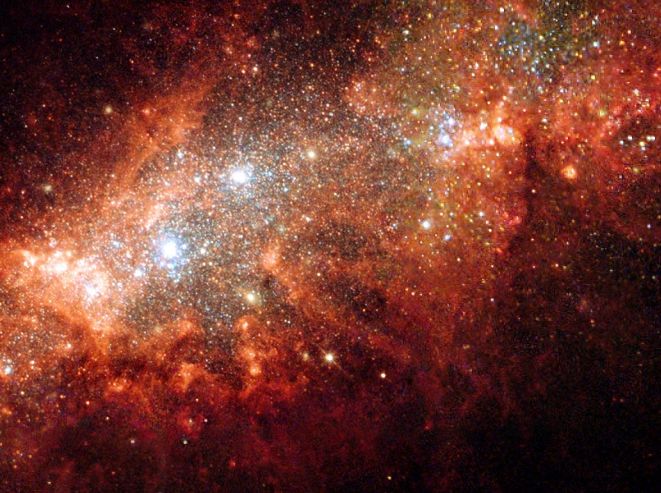NGC 1569: Starburst in a Small Galaxy

Explanation:
Grand spiral galaxies
often seem to get all the glory, flaunting
their young, bright, blue star clusters in beautiful,
symmetric
spiral arms.
But small,
irregular galaxies
form stars too.
In fact,
as pictured here, dwarf galaxy
NGC 1569 is apparently
undergoing a burst of star forming activity, thought
to have begun over 25 million years ago.
The resulting
turbulent environment is
fed by supernova
explosions as the cosmic detonations spew out material and trigger
further star formation.
Two massive star clusters - youthful counterparts to
globular
star clusters
in our own
spiral Milky Way galaxy -
are seen left of center in the gorgeous
Hubble Space Telescope image.
The picture spans about 1,500 light-years across NGC 1569.
A mere 7 million light-years distant,
this relatively close starburst galaxy offers astronomers an
excellent opportunity
to study
stellar populations in rapidly evolving galaxies.
NGC 1569 lies in the
long-necked
constellation
Camelopardalis.
Authors & editors:
Robert Nemiroff
(MTU) &
Jerry Bonnell
(USRA)
NASA Web Site Statements, Warnings,
and Disclaimers
NASA Official: Jay Norris.
Specific
rights apply.
A service of:
LHEA at
NASA /
GSFC
& Michigan Tech. U.

